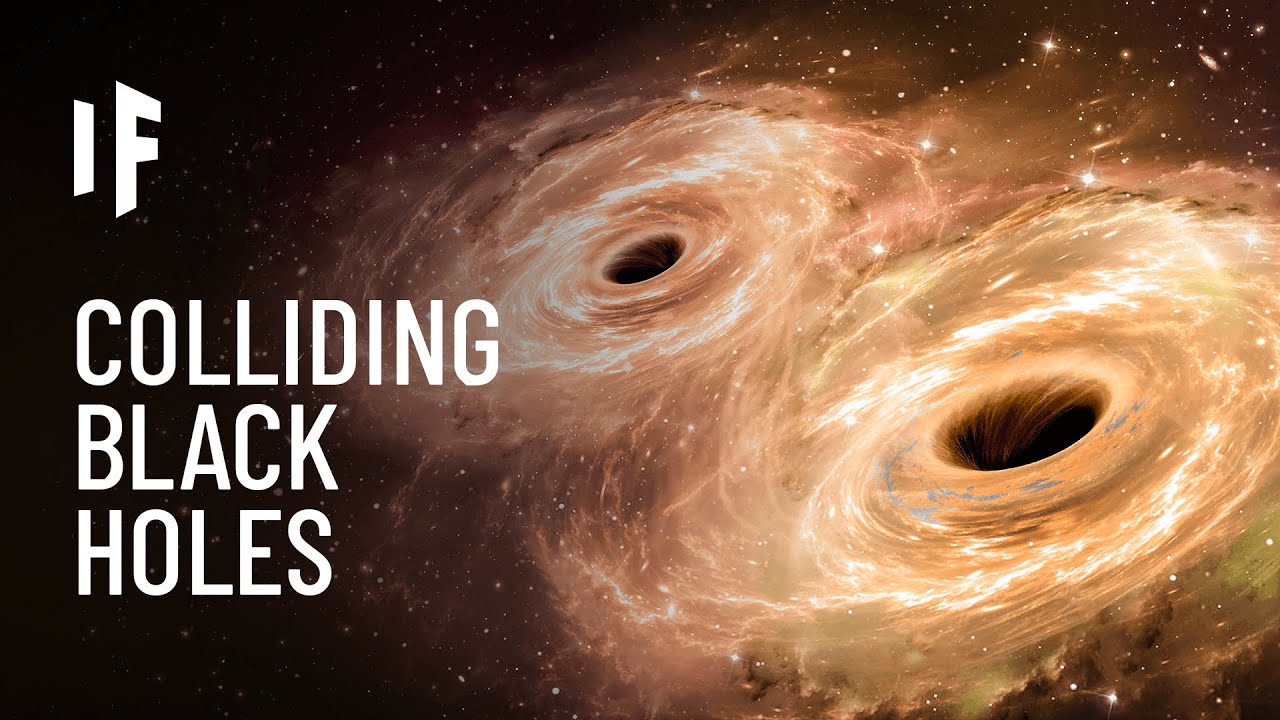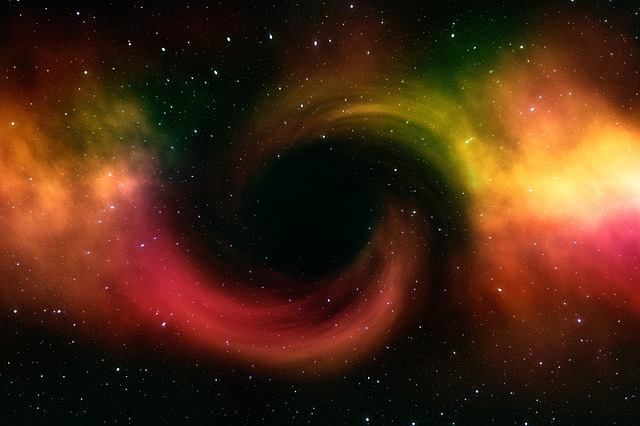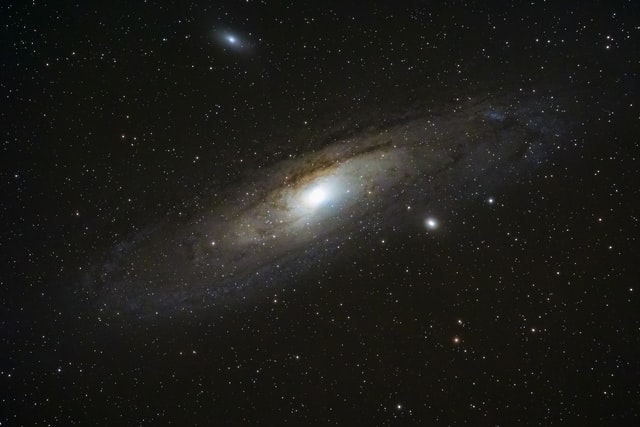Rare Cosmic Event – When Two Black Holes Become One
Somewhere in the vastness of the universe, an impending union awaits a couple of supermassive black holes.
As we say it here on Earth, it’s in the stars.
“The expected time till merger is approximately 100-300 days,” according to the 40-page scientific paper, “Tick-Tock: The Imminent Merger of a Supermassive Black Hole Binary.”
That would be sometime between February/March and October of the present year.
Twelve Chinese scientists from different learning institutions in China, with one from the Perimeter Institute for Theoretical Physics in Canada, joined forces for that paper.
Astrophysicist Ning Jiang, a research associate at the University of Science and Technology of China, led the team in studying the looming unique occurrence involving two supermassive black holes.
When we speak of “supermassive” black holes, the National Aeronautics and Space Administration (NASA) said that these are the type of black holes that “are millions, if not billions, of times” larger than the Sun.
On January 27, 2022, Jiang submitted their paper to arXiv, an online source of scholarly articles maintained by Cornell University in New York.
The forthcoming black holes mergewill deepen interest and curiosity in them, with black hole, in itself, already an enigma of sorts.

What If Two Black Holes Collided?
Black Hole Facts
So, there are “holes” in the universe? What are these black holes? What’s inside them? Where do these “holes” lead to? Also, are they really black?
Before we go to something “black,” let’s first discuss something bright: the stars.
Massive stars – stars that are five times bigger than the Sun – start to collapse (or die) when the nuclear fuel found in their center (or core) gets depleted.
A massive star explodes when it collapses/dies. This explosion is called a supernova, which NASA estimated to happen in one given galaxy “once every hundred years.”
After a massive star explodes, it will leave behind some remnants or objects. From these remnants, a black hole forms.
In short, the death of massive stars – again, only massive stars – give birth to black holes.
Hence, black holes are basically collapsed stars.
Here’s NASA’s definition: “A black hole is a place in space where gravity pulls so much that even light cannot get out.”
In other words, black holes are not exactly holes but regions in the universe that have very strong gravity.
Looking back, in 1916, physicist Albert Einstein (1879-1955) predicted that there were black holes in the universe, according to Space.com.
According to a 2008 NBC News article, American physicist John A. Wheeler (1911-2008) originally called a black hole as a “gravitationally completely collapsed star.” (Whew! That was long!)
In a 1967 conference, when Wheeler talked about this collapsed star, someone from the audience blurted out the words “black hole.” He picked up the term and used it since then to replace the long and seemingly dull name he initially created. (Good decision!)
The first time a black hole was discovered was in 1971, and that black hole was named Cygnus X-1. Its discovery made black holes to be no longer regarded as hypothetical objects in outer space.
As mentioned earlier, black holes have extremely strong gravity. It’s so strong that all of the light gets pulled into the black hole’s center, according to NASA, rendering it invisible in space. That briefly explains why black holes are “black.”
There’s no light visible. What exists is just “a completely black sphere,” according to astrophysicist Ethan Siegel in his 2018 Forbes article.
In addition, inside a black hole, there will be “blackness” and “nothing,” said Siegel.
If that’s the case, then how are black holes found?
Through the aid of satellitesand powerful telescopes, scientists search for a kind of “high-energy light,” according to NASA. This light (invisible to the naked eye) is only created when stars get near a black hole. Therefore, once spotted, it means there’s a black hole somewhere.
In addition, the black hole’s strong gravity affects the stars near it. So, observing stars could lead to finding out the presence of a black hole.
In a 2020 NASA podcast titled, “Inside a Black Hole,” astrophysicists Regina Caputo and Jeremy Schnittman described what would happen if a person fell on a black hole.
“Say if you were going feet first, you know, your feet would start to be stretched apart basically like a spaghetti,” said Caputo.
This is what they call in astrophysics (using physics to study astronomical objects and occurrences) as “spaghettification” or the “noodle effect.”
So, getting pulled in inside a black hole will “just rip you to pieces,” according to Schnittman.
Indeed, literally and figuratively speaking, a black hole sucks.
Binary Black Hole
NASA said that the term “solar mass” is used to refer to the mass of a black hole. The mass of the Sun is the equivalent of 1 solar mass, and 1 solar mass is “one million times more than” the Earth’s mass.
Know first the different black holes to understand what a binary black hole is.
Based on scientific theories, there are four types of black holes, namely:
(a) miniature black holes(other terms: mini black holes; micro black holes; quantum mechanical black holes)
Given their size – smaller than an atom – these black holes go unnoticed in outer space, according to the National Geographic.
(b) stellar-mass black holes(other terms: stellar black holes; astrophysical black holes) This type of black hole has a mass approximately between 3 and 10 solar masses.
(c) supermassive black holes
The range of their masses are from “millions to billions,” according to NASA.
One example of a supermassive blackhole is the Sagittarius A* (the asterisk is pronounced as “star”). It’s in the center of the Milky Way, the galaxy where the Solar System is found.
(d) intermediate-mass black holes
Their mass is estimated to be between 100 and 1,000 solar masses.
Stellar-mass black holes and supermassive black holes are the black holes formed because of a supernova explosion.
Wikipedia defines “binary black hole” as “a system consisting of two black holes in close orbit around each other.”
It’s probable for them to collide, and when that happens, they will merge as one.
The merging will result in a release of vast amounts of energy and will “send massive ripples,” according to Maryland-based Space Telescope Science Institute, called “gravitational waves” in the universe.
The two black holes reported to merge are found in a galaxy called NGC 7727. One of the black hole’s masses is 6.3 million solar masses; the other, 154 million.
The rare cosmic event will have no harmful effect on Earth.
NGC 7727 is 89 million light-years away from our planet. Note that 1 light-year is approximately 9 trillion kilometers (6 trillion miles).
Why Are Black Holes Important?
In general, black holes are important because they aid scientists to improve and broaden their understanding of objects and phenomena in the universe.
According to John A. Wheeler, per NBC News, black holes showed scientists that physics is not “immutable.” Moreover, they tend to defy the laws of physics, abolish our concept of time, and reduce space into a mere “infinitesimal dot.”
The website Event Horizon Telescope stated that black holes function like “laboratories” in outer space, where scientists can test theories and examine the workings of the universe in both small and large scales.
Scientists have already established the fact that the universe is continuously expanding.
They can know about its expansion rate by observing and studying supermassive black holes, according to the NuSTAR (Nuclear Spectroscopic Telescope Array) website.
Conclusion
According to a Forbes article, three researchers from the University of California Irvine published a study in 2017 declaring that the Milky Way is composed of nearly 100 million black holes.
In 2019, a black hole was photographed for the first time, too. It’s located in a galaxy called Messier 87 or M87.
Now in 2022, the world learned about the upcoming merging of two black holes, which goes to say that a lot more could be learned from these fascinating yet mysterious objects in the universe.


